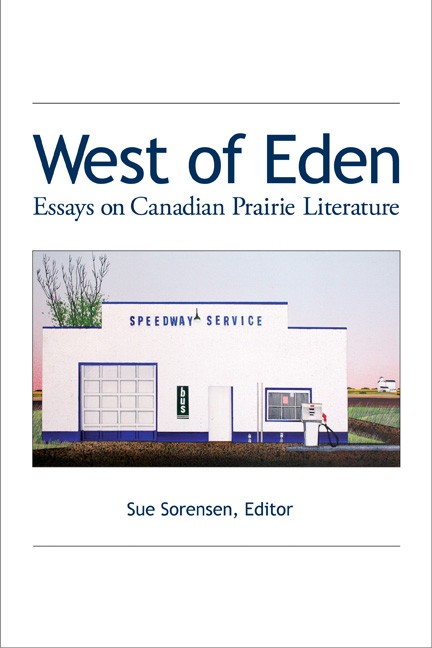Going back to the prairies
New book explores prairie literature and asks: Are the prairies paradise?
There’s a plethora of prairie literature in your local bookstore, but has academia done its part in terms of appreciating and interpreting that body of work? Sue Sorensen doesn’t think so.
Sorensen is the editor of West of Eden, a collection of essays and articles about the writing coming out of the prairies.
“There’s lots of prairie literature being written by prominent prairie writers, I didn’t see that other people like me, academics, were following through with our end of the deal, which I find odd,” said Sorensen, an English professor at Canadian Mennonite University.
In the book, 17 scholars reflect on well-known prairie writers such as Rudy Wiebe, Frederick Philip Grove and Margaret Laurence. Two of the questions Sorensen wanted the scholars to address were: How important is realism in prairie literature? And, how influential is the landscape?
The collection includes an essay on singer-songwriter Neil Young. “Going Back To The Prairies: Neil Young’s Heterotopia in the Post-9/11 World,” an article by Providence College professor Michael J. Gilmour, analyzes the lyrics on Young’s 2005 album, Prairie Wind.
“While his criticism of the Bush administration became more overt in the next album [2006’s Living With War
], Young’s criticism is more subtle in Prairie Wind,” Gilmour said. “He returns lyrically to the prairies… symbolically to the garden of Eden.”
This, of course, ties in to the name of the book, which recalls the garden mentioned in The Bible where the first man and woman lived.
“[It’s] meant to ask us to reflect on whether this place that we live in, the prairies, is like a beautiful garden,” Sorensen said. “Is it a beautiful paradise garden like Eden – and sometimes it seems like that. Or is it somewhere just to the west of Eden?”
While people are told not to judge a book by its cover, it’s hard to miss the book’s distinctly regional cover art. It is an image by Regina artist David Thauberger and it carries a profound ironic realism that many will appreciate (unless you’ve been permanently quarantined within city limits.)
Although Sorensen intended on not pursuing a particular theme, she said that as the project unfolded, she found a lot of writers were expressing concerns about the relationship prairie-dwellers have with the land.
“When people were trying to get settlers on the prairies, they sold the prairies as a place that was like Eden. A lot of settlers got here and were quite disappointed, and I think a lot of our literature has been dealing with the fallout from that.
“Is this a beautiful, pastoral, life-giving place, or is it a snow and wind-blasted grasshopper-ridden place?”
Sorensen will launch West of Eden: Essays on Canadian Prairie Literature at McNally Robinson Grant Park on Monday, Mar. 23, 2009 at 8 p.m. The event will include a discussion with contributors David Arnason, Dennis Cooley and Gaby Divay.
Published in Volume 63, Number 24 of The Uniter (March 19, 2009)







